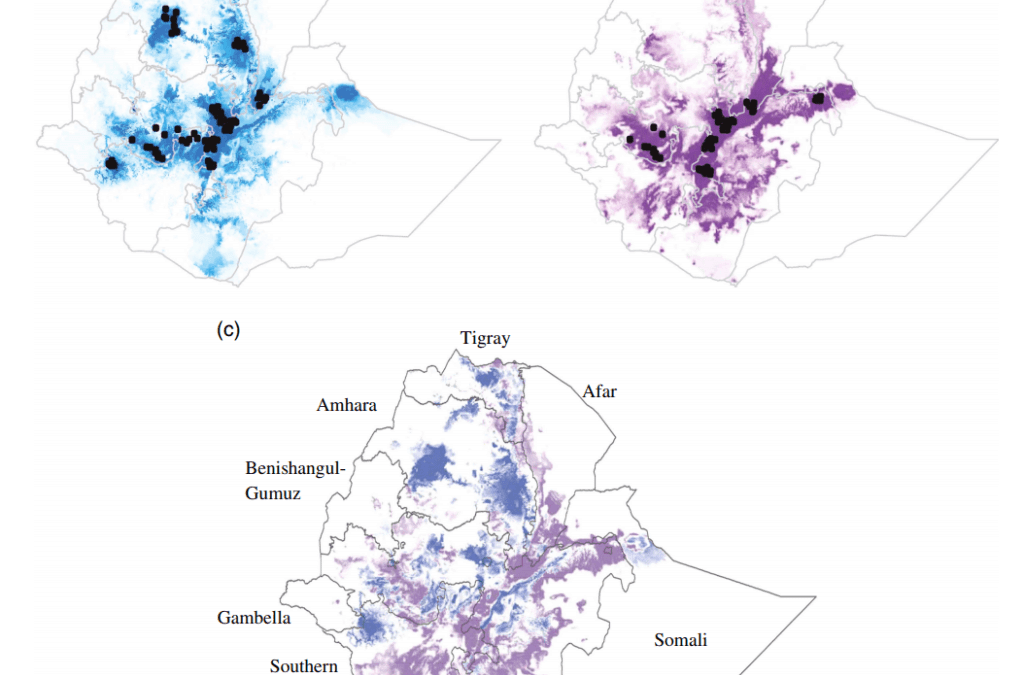Mapping Suitability of Chicken Breeds in Ethiopia

Suitability predictions for (a) Koekoek, and (b) Fayoumi chicken breeds in Ethiopia.
Climatic suitability of animals has been less studied than crops, yet its potential has been increasingly recognized as critically important for the success of livestock investments and impacts. Exotic animal breeds introduced in new environments are often not well suited and demand high investments in feeds and veterinary support. Addressing this challenge, Tadelle Dessi, ILRI’s Senior Scientist in the Animal Genetics/Breeding Program, co-authored a paper on the use of geographic information system and the maximum entropy method to predict the climatic suitability of two improved exotic chicken breeds in Ethiopia. Findings from this novel methodology is expected to support the efforts of animal scientists to deliver the best performing livestock breeds to rural communities, such as African Chicken Genetic Gains, led by ILRI.
Abstract
Predicting breed-specific environmental suitability has been problematic in livestock production. Native breeds have low productivity but are thought to be more robust to perform under local conditions than exotic breeds. Attempts to introduce genetically improved exotic breeds are generally unsuccessful, mainly due to the antagonistic environmental conditions. Knowledge of the environmental conditions that are shaping the breed would be needed to determine its suitability to different locations. Here, we present a methodology to predict the suitability of breeds for different agro-ecological zones using Geographic Information Systems tools and predictive habitat distribution models. This methodology was tested on the current distribution of two introduced chicken breeds in Ethiopia: the Koekoek, originally from South Africa, and the Fayoumi, originally from Egypt. Cross-validation results show this methodology to be effective in predicting breed suitability for specific environmental conditions. Furthermore, the model predicts suitable areas of the country where the breeds could be introduced. The specific climatic parameters that explained the potential distribution of each of the breeds were similar to the environment from which the breeds originated. This novel methodology finds application in livestock programs, allowing for a more informed decision when designing breeding programs and introduction programs, and increases our understanding of the role of the environment in livestock productivity.
Lozano-Jaramillo, M., Bastiaansen, J.W.M., Dessie, T. and Komen, H., 2019. Use of geographic information system tools to predict animal breed suitability for different agro-ecological zones. animal, 13:7. pp. 1536-1543.
July 9, 2019
CGIAR-CSI





